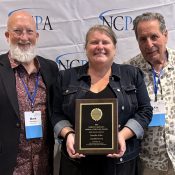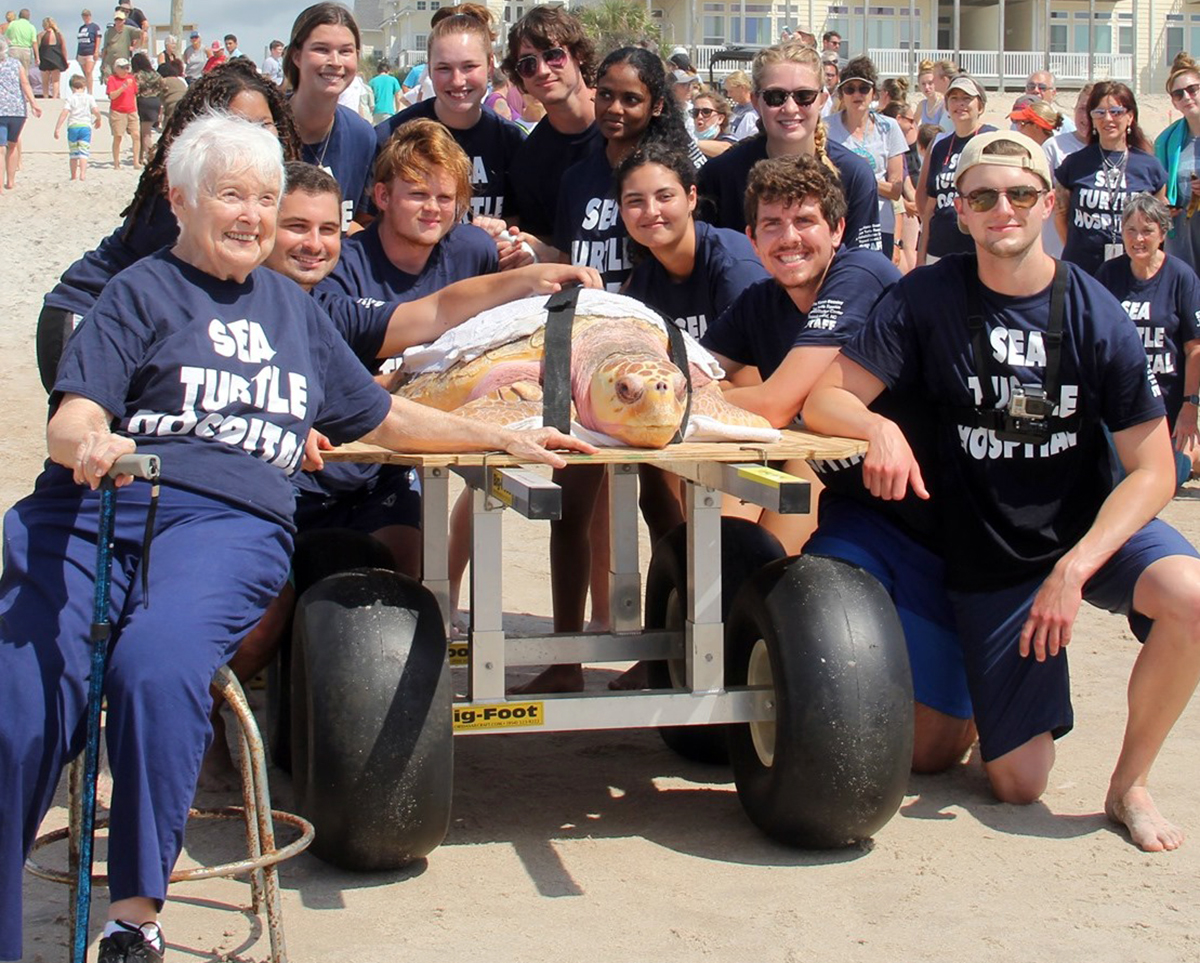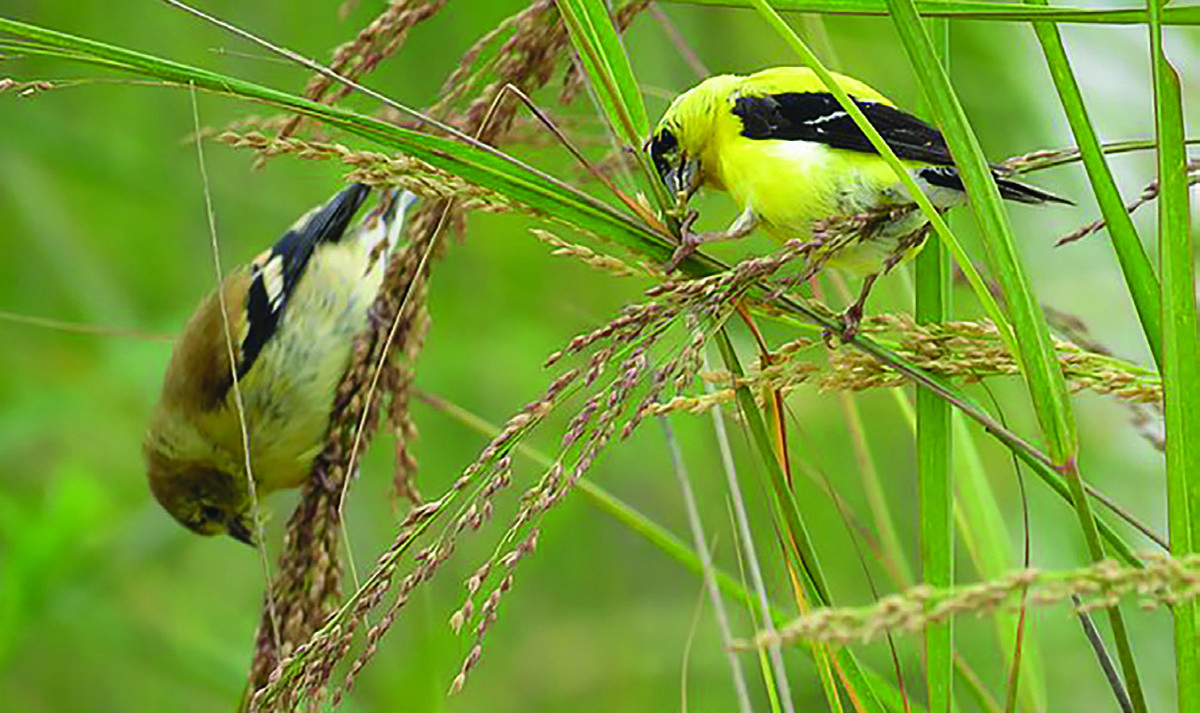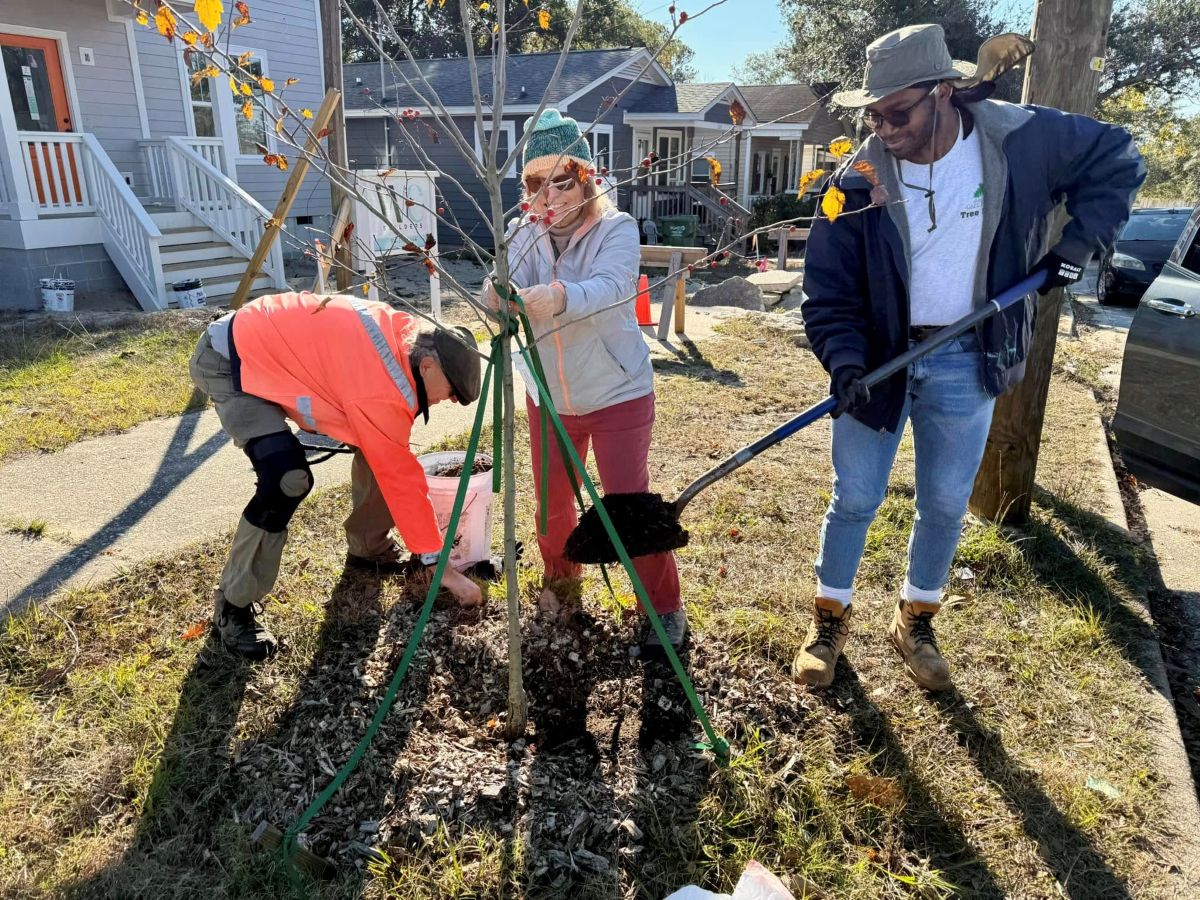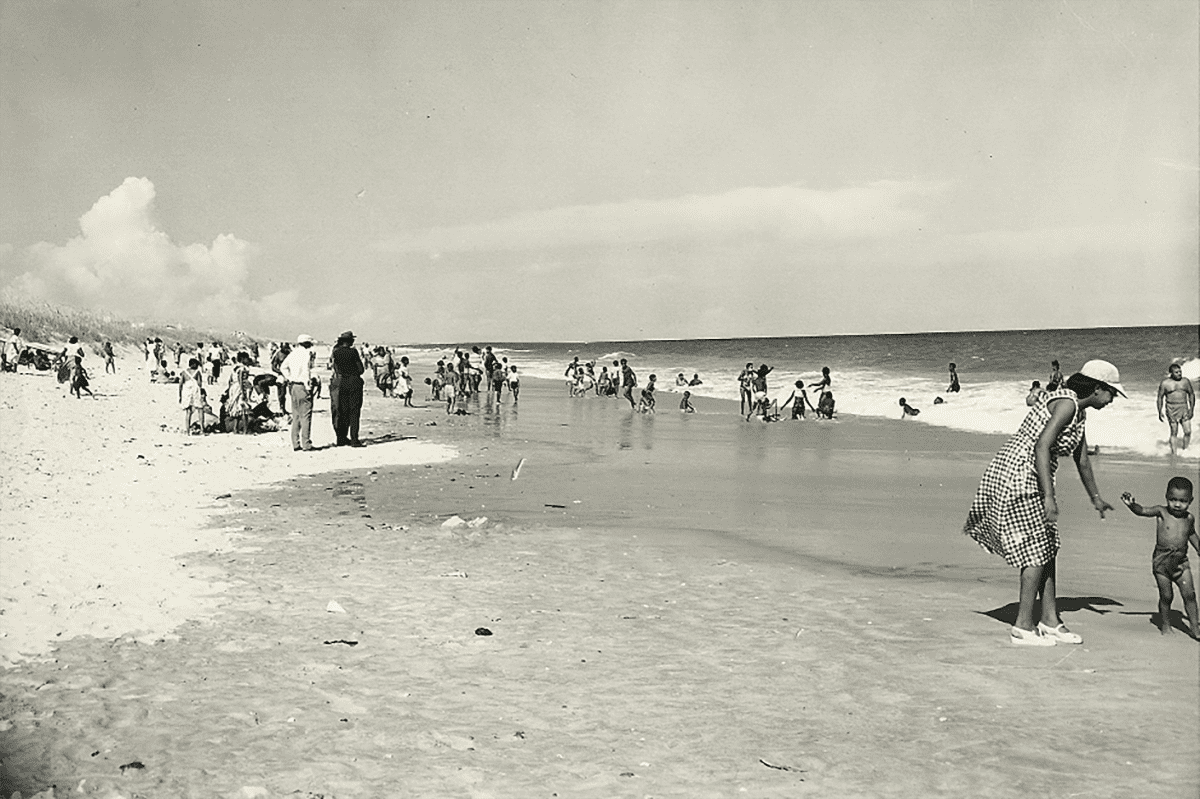
Every summer, the women of Ocean City Beach organized crabbing trips to Topsail Island’s north end. On a waxing moon, when the tide was exactly right, moms and their kids skimmed the saltwater shallows hunting blue crabs, as many as they could carry. The fat jimmies and sooks were the promise of delectable family recipes: rich gumbo, savory crab casseroles and delicate crab-stuffed eggs.
“My mom would always say that on a growing moon, you get more crab meat than on a wasting moon,” Kenneth Chestnut says. “I didn’t believe it, but I became a believer.”
Supporter Spotlight
Chestnut’s faith arrived one unforgettable day. The tide had just begun to turn, creating tranquil waters that are a guaranteed feast for hungry blue crabs. Suddenly, the marsh teemed with them, and harvest baskets quickly overflowed.
“It was almost biblical,” Chestnut marvels. Faced with this unexpected bounty, the women had to think fast. How would they get such a haul home?
“They told us boys take off our jeans — we had on swimming trunks underneath — tie up the bottoms of them and fill them with crabs,” Chestnut says, chuckling at the memory.
Back at Ocean City Beach, everyone went to work steaming the mountains of crabs. Pickers meticulously avoided damaging the fragile back shells. Those were always set aside to dry in the sun for use in one of the most beloved dishes: deviled crabs.
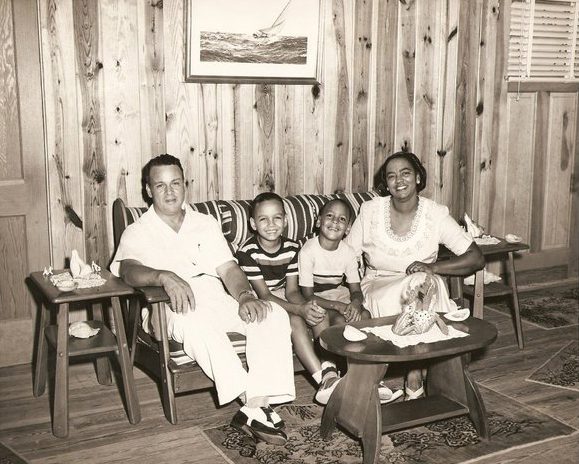
Chestnut’s mother, Caronell, took her version to Michelin-star level. She began by sautéing minced onions and celery in rich butter before adding flour and milk to create a luxurious bechamel sauce. After gently folding in sweet crab meat and chopped, hard-boiled eggs, Caronell Chestnut mounded the exquisite mixture into the sun-bleached shells. She finished each serving with a dusting of cracker meal and “small tip of butter” before baking them golden brown for a neighborhood feast.
Supporter Spotlight
And it wasn’t just crabs at those delicious gatherings.
“They would prepare dishes and then share dishes. All kinds,” Chestnut reminisces. Food was the heartbeat of the hamlet, a profound expression of connection, so central, so vital, that someone eventually realized Ocean City Beach needed its own cookbook.
More than recipes
The crabbing and cooking memory Kenneth Chestnut relates resonates deeply with my own childhood in Jacksonville, just 25 miles away. Yet, our neighborhoods were worlds apart.
The Chestnuts were Black; my family was white. Although the Civil Rights Act had been law for a decade when we first drove through Ocean City Beach on our way to and from favorite crabbing spots in the early 1970s, Topsail Island’s lines of segregation were clear.
We understood Ocean City Beach as separate, “the Black beach.” Its enduring community cookbook, originally published in 1980 and titled “Ms. Winnie’s Seafood Cook Book,” is a powerful testament to Maya Angelou’s profound truth: “Human beings are more alike than we are unalike. And the minute we began to understand, just the slightest part of that, we recognize ourselves as family.”
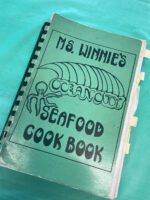
Winnie Robinson, a long-time Ocean City Beach resident, painstakingly assembled that first recipe collection as a fundraiser. Chestnut imagines she walked house to house, asking cooks to share their most delicious creations.
The sumptuous dishes, often elaborate in their seasonings — fish chowder with a splash of white burgundy wine, dill- and nutmeg-scented clam fritters, grilled sesame trout, sweet-and-sour sauteed croakers, to name a few — tell a complex story.
In 1949, Edgar Yow, a white man and former Wilmington mayor, witnessed the harsh realities of racism. He envisioned a haven where people of color could enjoy the shore and own oceanside homes in peace.
Yow held seaside property and collaborated with Kenneth Chestnut’s father, Wade Chestnut, and Wade’s siblings to turn part of the acreage into the milelong Ocean City Beach. By 1954, this determined community had 15 homes, a welcoming motel, a bustling restaurant and, soon after, an Episcopal chapel, a church summer camp and the iconic Ocean City Fishing Pier.
“When growing up, I would go on the beach and I would see it was really crowded to the left, really crowded to the right, recalls Carla Torrey, editor of the cookbook’s latest incarnation, “Tried and True Recipes.” “And there would maybe be me and two other people on our beach. And I always was like, ‘Why is that? Is there something special about me?’”
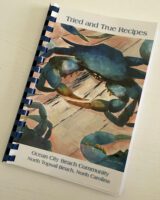
“And then I later realized why. That it was this invisible line where nobody crossed over and came on our beach.”
Unwelcome at many restaurants and living somewhere set apart for no other reason than its residents’ skin color, Ocean City Beach’s talented chefs cultivated a culinary utopia.
Torrey shows a fuzzy black-and-white photo of a community garden thriving even in dry, sandy soil. She yearns for the creamed corn one neighbor prepared fresh from the cob. Chestnut recalls his dad salt-curing mullet in a barrel and neighbors carefully tending molting crabs that would become fried, soft-shell delicacies.
Kitchen creativity, Torrey and Chestnut explain, blossomed during the summers. Moms and their kids, home from school, lived at Ocean City all week. Working dads joined their families on weekends. The women supported each other by sharing meals and recipes. Those carefree days offered them the luxury of time to lovingly prepare food and experiment with fresh ideas.
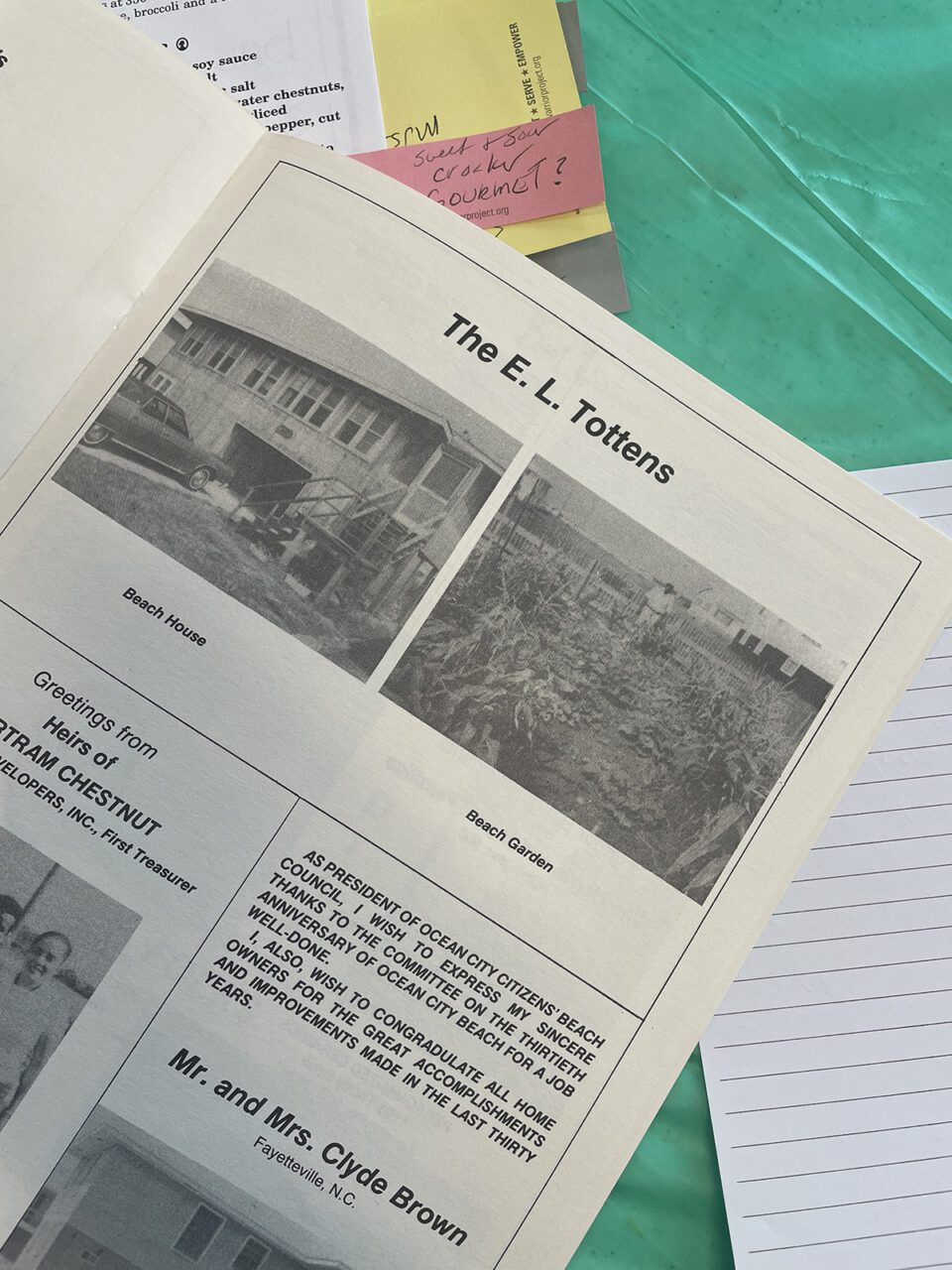
“It was a joy to her if she didn’t feel pressured to cook,” Chestnut remembers about his mother. “I think that was why she especially loved it down here.”
Each cook infused delights with flavors and methods passed down through the generations along with the latest trends, like Carol King’s Prawn and Egg Curry and Bessie W. Hill’s shrimp-stuffed eggplant.
As Winnie Robinson herself wrote in the original cookbook’s acknowledgments, “Our source has been the ‘world of food.'”
Cooking up the future
Today, 30 Ocean City Beach homes survive from a peak of 100 that existed before hurricanes Fran and Berta took their tolls in 1996. Storms also claimed the Ocean City Beach pier, leaving behind only a solitary tower standing sentinel on a scrubby oceanfront lot. The village nearly blends into the relentless sprawl all around. In 1990, North Topsail Beach absorbed Ocean City Beach into its town limits.
The triumph of civil rights has slowly, gently, loosened ties to this community born of necessity. “Descendants (of original homeowners) can go anywhere and buy anywhere, as opposed to just here,” Chestnut notes. “That’s the way it should be.”
Yet, the important story of Ocean City Beach is far from forgotten. It lives on in an exhibit at Surf City’s Missiles and More Museum, tracing Topsail Island’s history. The community holds a place on both the N.C. Civil Rights Trail and the Jacksonville Onslow African-American Heritage Trail. A roadside marker near the old pier entrance humbly sums up Ocean City Beach’s founding. Blue street signs delineate its roads.
And there’s the cookbook.
While the societal injustices that compelled Ocean City Beach’s creation are a painful memory, they don’t diminish the deep nostalgia families feel for the idyllic summer days they spent in the village. Ensuing generations cling to heirloom recipes and the cherished tradition of sharing meals, a legacy of resilience and joy expressed in the community cookbook.
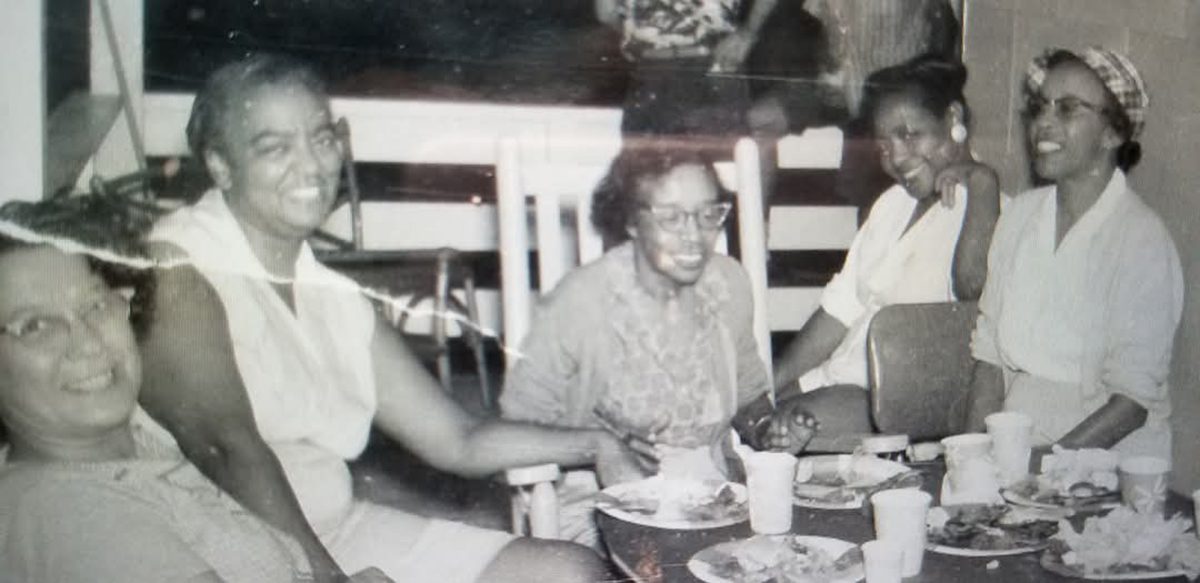
Chestnut carries on his mother’s clam fritter recipe, the one with dill and nutmeg. His daughter still prepares her grandmother’s Shrimp and Rice Surprise, an easy, irresistible mélange of ham, sausage, shrimp, mushrooms and melty cheese.
Torrey, driven by a passion for preservation, spent hours immersed in Robinson’s pages. She brought forth treasured recipes and solicited new ones for “Tried and True Recipes,” published in 2014, including her own elaborate citrus crabcakes with coriander and blood orange aioli.
Sales of “Tried and True Recipes” help fund maintenance of the chapel and community building, which continue to host gatherings. Potlucks and an annual Labor Day block party happen annually.
Proceeds also support Ocean City Beach’s annual Jazz Festival. Every Fourth of July, people of all colors come together for two days of music. Torrey’s husband, Craig, organizes a historic walking tour during the event, guiding visitors through streets that hold so many stories.
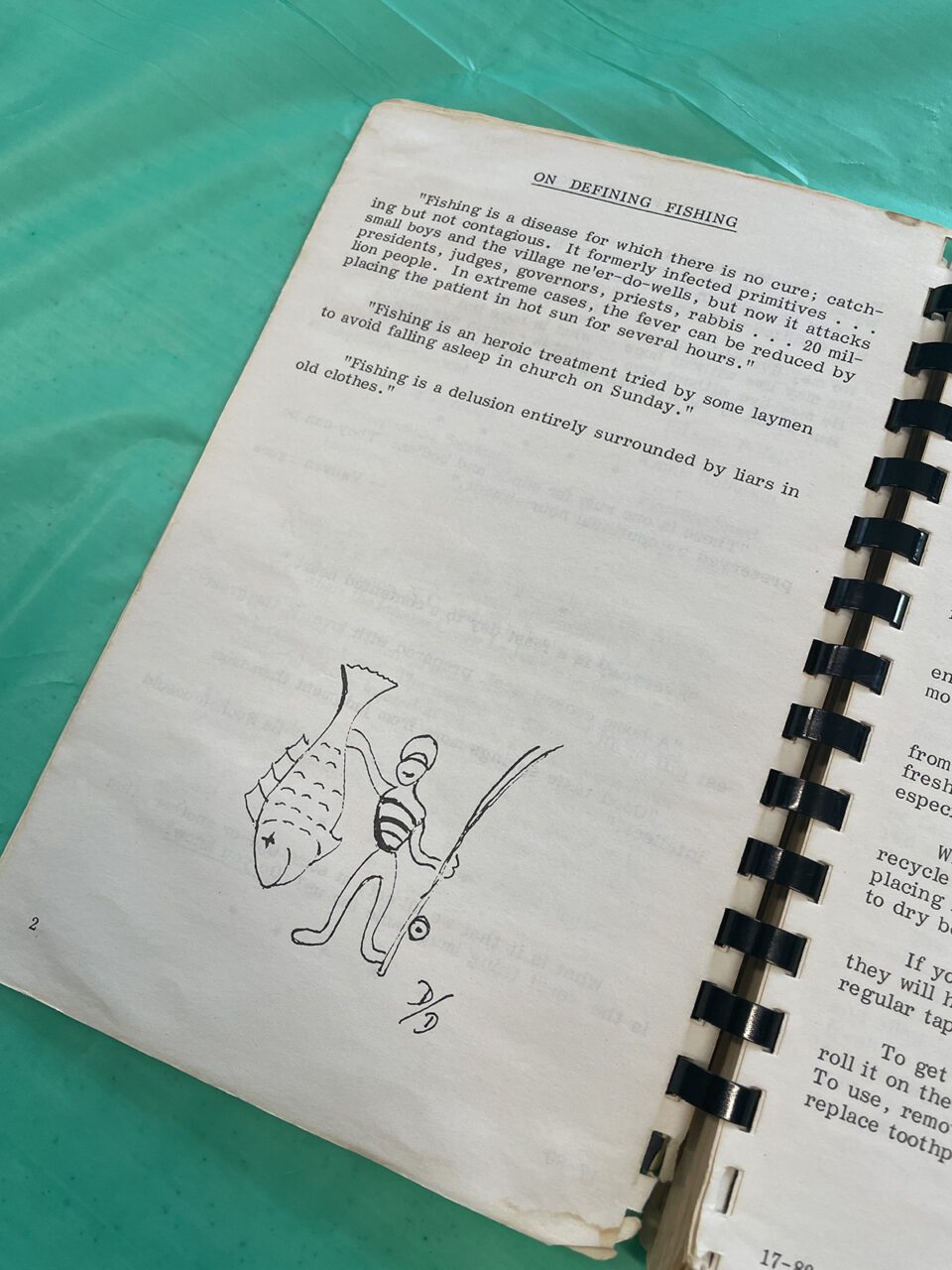
“Tried and True Recipes” is always available at the festival and year-round online. Both the cookbook and the Jazz Festival are powerful vehicles to tell the story of Ocean City Beach, Carla Torrey says.
“And hopefully keep the history going so it’s not forgotten.”
Caronell Chestnut’s Deviled Crabs
½ cup chopped onion
½ cup chopped celery
½ stick butter or margarine
2 tablespoons all-purpose flour
½ cup milk
1 tablespoon Worcestershire sauce
Seasonings as desired
1 pound crab meat
2 hard-boiled eggs, chopped
Cracker meal or cracker crumbs
Butter or margarine
Sauté onions and celery in butter or margarine until vegetables are tender. Remove from heat and add flour, milk, Worcestershire and seasonings. Return to heat and cook until thick. Add more milk if necessary for the right consistency. Mix this with crab meat and hard-boiled eggs. Fill crab shells or a baking dish with mixture. Sprinkle top with cracker meal or cracker crumbs. Place a tip of butter or margarine on top of each shell. Bake at 350 degrees until brown (about 25-30 minutes).


